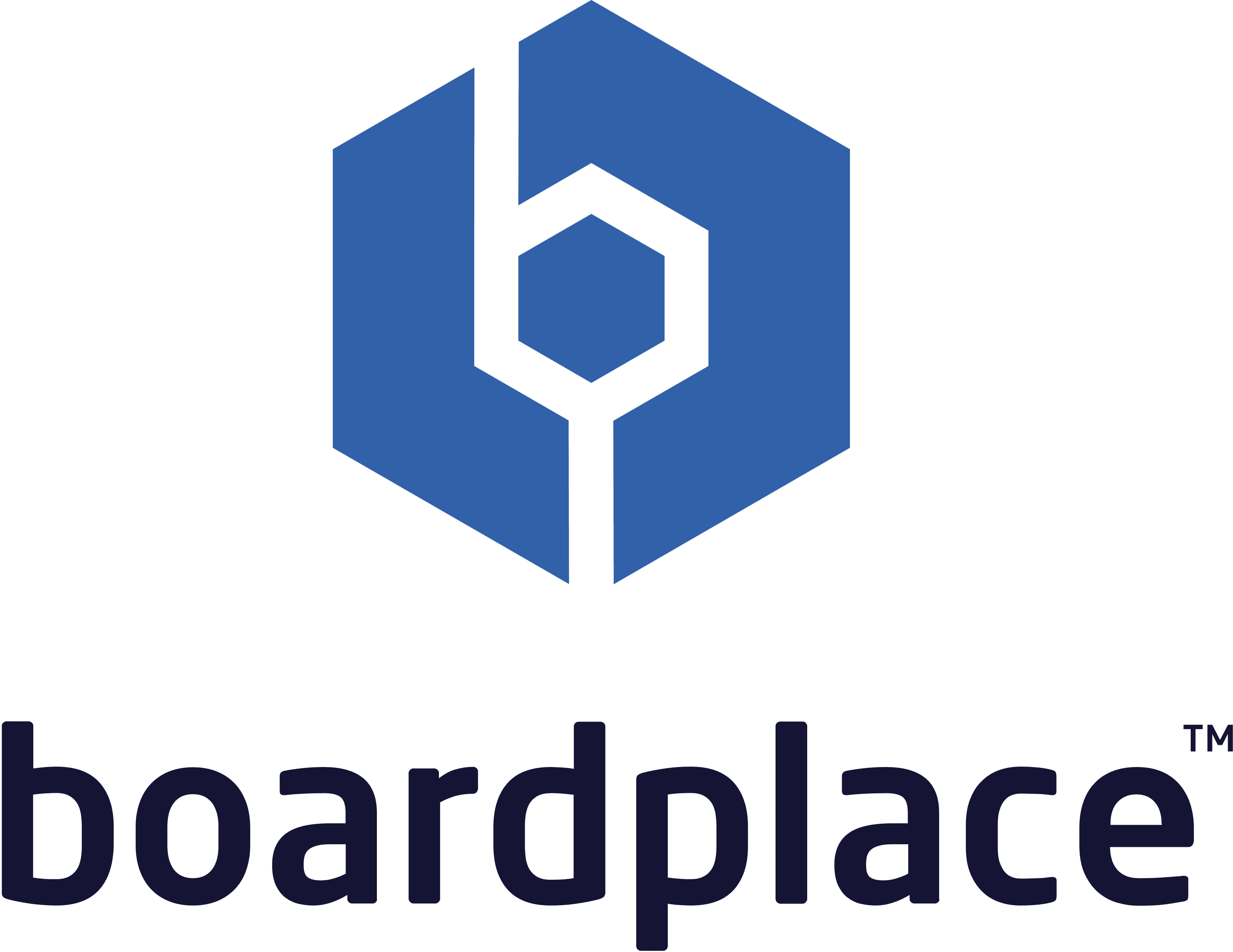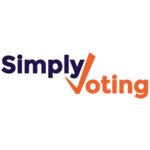Yes, voting software can be accessed from any device or platform with an internet connection. Most voting software is web-based, which means it can be accessed from any device with a web browser, including laptops, cellphones, and tablets. Furthermore, several voting software platforms provide mobile apps for convenient access and use on the road. This ensures that all voters, regardless of device or operating system, have easy access to the voting process.
List of Best Voting Software
Swift Polling is revolutionizing the polling industry with its advanced features. It offers real-time audience engagement and feedback options, enabling better decision-making and creating interactive experiences. Upgrade from traditional polls to Sw...Read More Swift Polling
eVotters is a Strata Voting Software that revolutionizes how lot owners participate in meetings and Strata Managers conduct them. Our user-friendly platform simplifies and speeds up the voting process, saving valuable time and resources. With eVotter...Read More eVotters
Doodle - your one-stop solution for all your online appointment scheduling needs. With Doodle, managing appointments becomes a breeze. Set up appointments effortlessly, receive timely reminders, and secure preferred dates and locations with our compr...Read More Doodle
Vogo - your go-to solution for reliable and secure election and virtual event services tailored to the needs of member-based organizations. Our experienced team and top-notch features ensure a seamless and accurate voting process that meets your uniq...Read More Vogo
Boardplace Asmbly is a digital solution for organizing and conducting general assemblies. Our platform offers an anonymous and secure voting system, making decision-making efficient and reliable. With features for planning, inviting members, and foll...Read More Boardplace Asmbly
Choice Voting is software designed to create STV-IRV/ATV elections for educational institutions and organizations. It simplifies the process of creating secure and efficient online voting systems, making it an ideal solution for conducting fair and i...Read More Choice Voting
SlideLizard is a presentation tool. Its sleek interface, easy creation process, and advanced audience interaction capabilities elevate your presentations. Engage and inform your audience with live polls, quizzes, and feedback, while gaining valuable...Read More SlideLizard
TurningPoint is a audience response system that has transformed engagement and interaction in educational and business settings. With features like live polling, feedback, and data analysis, TurningPoint streamlines the process of evaluating comprehe...Read More TurningPoint
Crowdpurr is a interactive event software that will revolutionize your live, virtual, or hybrid events. Engage and entertain your audience with engaging trivia and exciting leaderboards, all through a user-friendly interface designed for a seamless e...Read More Crowdpurr
DirectPoll is a platform that enhances presentations with interactive polls for instant audience engagement. Seamlessly integrate polls into your presentations and monitor responses in real-time, allowing you to deliver compelling content without any...Read More DirectPoll
OnBoard, the premier board management software utilized by over 6000 companies worldwide. Equipped with a wide array of features, including agenda development, teamwork tools, secure messaging, voting and approvals, D&O surveys, and meeting insights,...Read More OnBoard Board Management Software
iClicker is software designed to enhance student engagement and streamline classroom management. Its live polling, attendance tracking, and performance evaluation capabilities enable instructors to facilitate interactive learning and measure student...Read More iClicker
SMS Poll is a solution for audience interaction. Offering an affordable and easy-to-use platform, it allows for real-time feedback and engagement via simple text message responses. Perfect for events, classrooms, and market research, say goodbye to c...Read More SMS Poll
OpaVote is a trustworthy online voting platform that ensures transparent and secure elections. Its user-friendly interface makes it easy to create ballots and track results. Suitable for all types of organizations, OpaVote encourages democratic parti...Read More OpaVote
Election Runner is a voting software solution for managing secure and seamless elections across all devices. With advanced features such as 256-bit encryption and customizable design, Election Runner guarantees a smooth and effortless voting experien...Read More Election Runner
Simply Voting - the leading platform for conducting secure and customizable online elections with ease. Trusted by over 5000 organizations worldwide, our proven technology ensures a hassle-free voting process that can be tailored to your specific nee...Read More Simply Voting
eBallot is a online voting solution for organizations of all sizes. With advanced security measures, real-time results, and robust analytics, eBallot makes decision-making effortless and transparent. Offering a variety of customizable voting methods,...Read More eBallot
BigPulse is a trusted online voting platform that simplifies the process of conducting secure elections, surveys, and nominations. Our platform is compatible with all devices and offers features like SSO and integrated bulk email for convenient usage...Read More BigPulse
SimpleTexting is your ultimate solution for all your bulk SMS needs. Our innovative SMS software streamlines the process of sending mass text messages, making it easier and more efficient for you to connect with your audience. With a user-friendly in...Read More SimpleTexting
VoxVote is a Voting Software ideal for both agencies and startups. Offering a solution, VoxVote boasts advanced capabilities including Compliance Management, Online Applications, and Self-Registration for a smooth and hassle-free voting process. Its...Read More VoxVote
Learn More About Voting Software
- What Is Voting Software?
- What Are The Recent Trends In Voting Software?
- Benefits Of Using Voting Software
- Important Factors To Consider While Purchasing Voting Software?
- What Are The Key Features To Look For In Voting Software?
- Why Do Businesses Need Voting Software?
- How Much Time Is Required To Implement Voting Software?
- What Is The Level Of Customization Available In Voting Software?
- Which Industries Can Benefit The Most From Voting Software?
- Conclusion
What Is Voting Software?
Voting software is a digital tool that simplifies and streamlines the voting process for any form of election or decision-making. It lets people to vote electronically, which eliminates the need for paper ballots and laborious vote counting. This program is widely used in businesses, schools, associations, and governments to ensure fair and accurate elections.
With technological improvements, voting software has grown to include a wide range of features and capabilities, making it a versatile and efficient alternative for managing any type of voting procedure. Depending on the software vendor, features may include safe online voting, real-time vote counting, configurable ballot options, different languages, and voter verification.
One of the primary advantages of adopting voting software is the possibility to greatly cut the time and resources required to hold elections. By eliminating the need for physical ballots and hand counting, the procedure becomes more efficient and accurate. This can also help to save costs and minimize the possibility of human error. Another advantage of voting software is its ability to provide a secure and transparent voting experience.
The software frequently employs advanced encryption and authentication measures to ensure the integrity of the votes and prevent fraudulent activity. Additionally, many software suppliers give audit trails and data to ensure a transparent voting process. When purchasing voting software, make sure that it fulfills the organization's specific goals and expectations. Some software may be designed for specific sorts of elections, while others provide broader capabilities. When making a decision, consider issues such as simplicity of use, security measures, and customer support.
What Are The Recent Trends In Voting Software?
In recent years, there has been a clear shift toward digital and internet solutions for many parts of our daily lives, including voting. Voting software is gradually replacing traditional paper-based voting procedures as technology and capabilities advance. One of the most recent innovations in voting software is the usage of blockchain technology.
This decentralized mechanism assures that votes are secure and transparent, reducing the possibility of tampering or hacking. Furthermore, blockchain technology enables easy and quick verification of voter eligibility, making the voting process more efficient. Another trend in voting software is the incorporation of mobile and internet voting capabilities. This makes voting more accessible and convenient for voters, particularly those who are unable to physically visit a polling site.
Online and mobile voting have the potential to improve voter turnout since they reduce the need for people to take time off work or wait in large lines on election day. Furthermore, many voting software systems now include complex capabilities like real-time vote tracking and analysis. These features give election authorities with useful insights and data, helping them to make better judgments and improve the overall voting process.
In terms of usability, one of the most recent developments in voting software is the adoption of user-friendly interfaces. This makes the product more intuitive and easier to use, especially for non-technical users. As a result, voter intimidation and confusion are decreased, and the voting process becomes more efficient. With worries about voter fraud and security, many voting software businesses are now focusing on protecting the integrity and accuracy of the election process.
This has resulted in the development of biometric authentication, which employs unique physical traits such as fingerprints or facial recognition to validate a voter's identification. This additional degree of security not only prevents voter fraud, but also contributes to public faith in the voting system.
Benefits Of Using Voting Software
Voting software is a powerful tool that has transformed how organizations and corporations conduct voting processes. What was formerly a time-consuming and tedious operation is now readily automated and streamlined with voting software. Using voting software has various advantages for both small and large organizations.
Look at the benefits of using voting software and why it's essential for any modern business or organization.
1. Streamlined And Efficient Process: One of the main advantages of using voting software is that it streamlines and simplifies the voting process. Manual voting techniques, such as paper ballots, are prone to error and require a significant amount of time and resources. With voting software, the entire process is automated, minimizing the possibility of errors and considerably lowering the time and effort required to execute a vote.
2. Increased Accessibility: Voting software simplifies the voting process and makes it more accessible to a wider audience. Traditional voting techniques may require participants to be physically present at a given location, making it difficult for remote or busy people to vote. Voting software allows participants to vote from anywhere and at any time, making the process more convenient and inclusive.
3. Enhanced Security And Accuracy: Voting software provides a higher level of security and accuracy than traditional voting techniques. Voting software uses features such as encryption and multi-factor authentication to ensure that only authorized users have access to the voting process. Furthermore, the software's automated nature reduces the likelihood of human error, resulting in more accurate and reliable findings.
4. Cost-Effective: Voting software can also result in cost reductions for organizations. The removal of paper ballots and the reduction in the requirement for manual work make voting more cost-effective. Furthermore, the accessibility of voting software eliminates the need for remote participants to spend trip fees.
5. Real-Time Result: One of the most major advantages of using voting software is the ability to view results in real time. Traditional techniques require manually counting and tallying votes, which can be time-consuming. Voting software generates results instantaneously, giving businesses immediate feedback and insight into the outcome of the vote.
Important Factors To Consider While Purchasing Voting Software?
When it comes to purchasing voting software, there are various variables to consider before making a final decision. This is especially significant because voting software plays a critical role in guaranteeing fair and accurate elections, whether for a business, organization, or government.
Here are some crucial elements to consider while selecting the correct voting software:
1. Security: The voting software's security should be given top consideration. It should include strong encryption and authentication measures to avoid tampering or hacking. It should also include a secure database for storing all votes.
2. Accessibility: In today's digital age, it is critical to make voting software accessible to all voters, including those with disabilities. Screen readers, alternative input devices, and other adjustments should be included in the software to ensure accessibility for all users.
3. User-Friendly interface: The voting software should have a simple and intuitive interface that voters and administrators can easily navigate. Complicated and difficult-to-use software might cause errors and confusion, lowering the election's credibility.
4. Compatibility: The program should be interoperable with various devices, operating systems, and browsers to guarantee that all voters may use it without difficulty. It should also be able to withstand high volumes of traffic and votes without crashing.
5. Modification: Depending on the organization's specific requirements, it is critical to select voting software that allows for modification. This could incorporate features like multiple ballot alternatives, customizable voting procedures, and the possibility to add bespoke branding.
6. Audit Trail: A decent voting software should include an audit trail function to ensure a transparent and verifiable voting process. This ensures that each vote is recorded and traceable back to the voter, which improves election integrity.
7. Technical Support: It is critical to have dependable technical support in case problems develop throughout the voting process. Make sure the software provider provides 24-hour assistance and has an excellent track record of addressing technical issues quickly.
8. Pricing: While price should not be the decisive factor, it is critical to examine the cost of voting software. Compare the pricing of several software suppliers and select one that is within your budget while still satisfying your needs.
What Are The Key Features To Look For In Voting Software?
Voting software has become an indispensable tool in today's enterprises, whether for company elections, board meetings, or other decision-making procedures. With the growing demand for more efficient and accurate voting procedures, it is critical to invest in high-quality voting software. However, with so many options available on the market, it can be difficult to evaluate which features are critical for your firm.
To make an informed decision, here are the essential elements to look for in voting software:
1. User-Friendly Interface: Both voters and administrators should find the voting software's interface intuitive and simple to use. This will assist to avoid confusion and ensure a smooth voting process.
2. Multiple Voting Methods: Look for voting software that supports a variety of voting methods, including web-based, SMS, IVR, and in-person. This provides more flexibility and accommodates voters who may prefer one technique over another.
3. Security Precautions: Data security is a major problem when it comes to voting software. Make certain that the software you chose has high-level encryption and other security mechanisms in place to protect critical information and prevent fraudulent activity.
4. Real-Time Results: One of the primary benefits of using voting software is the ability to acquire immediate results. Look for software that can deliver immediate results and updates, providing you a clear view of the vote outcomes.
5. Customization Options: Every company has different voting process requirements. Look for software that can be adjusted to meet your specific requirements, such as branding, question types, and reporting capabilities.
6. Accessibility And Compatibility: Make sure the voting software works with a variety of devices, such as laptops, tablets, and smartphones. This will ensure optimum accessibility and make it easy for voters to participate from wherever.
7. Integration With Other Systems: If your business already uses other software or systems, it is critical to select voting software that integrates easily with them. This will help to streamline processes, saving time and effort.
8. Technical Support: Technical issues can occur at any time, thus it is critical to have dependable technical help from the voting software vendor. Make sure the company provides support via several channels and has a timely response time.
9. Audit Trail: Look for software that preserves a record of the voting process, including timestamps and voter data. This will provide an additional layer of security and transparency to the process.
10. Cost-Effectiveness: Finally, think about how much the voting software will cost. Look for options that provide good value for money, and think about the long-term benefits rather than just the upfront cost.
Why Do Businesses Need Voting Software?
As the world embraces technology, organizations are turning to voting software as a simple and effective tool to collect and analyze feedback from employees, customers, and stakeholders. This revolutionary program is intended to streamline the voting process, allowing organizations to make more informed decisions and gain important insights.
One of the primary reasons organizations use voting software is to promote communication and collaboration inside their organization. This program allows employees to vote on key issues without the need for actual meetings or printed ballots. This not only saves time and costs, but also enables for more inclusive decision-making because anyone, regardless of location, can participate.
Furthermore, voting software enables firms to collect and evaluate data in real time, delivering reliable and quick results. This eliminates the need for manual vote counting, lowering the risk of human mistake. The collected data can also be represented using graphs and charts, making it easier to discover patterns and trends and make sound judgments.
With the advent of remote work and virtual teams, voting software is increasingly important in keeping employees connected and motivated. It enables businesses to collect comments and suggestions from employees who may not be physically present in the workplace, ensuring that their voices are heard and respected. Additionally, voting software encourages transparency and impartiality in decision-making processes.
By giving all participants equal voting possibilities, it eliminates any bias or partiality that may occur in traditional voting techniques. Finally, with an increased emphasis on data privacy and security, businesses require dependable and secure voting software to safeguard critical information. Most voting software includes advanced encryption and user authentication procedures to ensure that collected data is kept confidential and only available to authorized users.
How Much Time Is Required To Implement Voting Software?
When considering voting software implementation, one of the primary concerns for buyers is the time required to properly set up and activate the system. The truth is, the time required for implementation varies based on a few key criteria. First, the complexity and features of the voting program will significantly affect implementation time.
Some software may have a basic, user-friendly interface and require little setup, whilst others may have extensive capabilities that take more time to modify and incorporate into existing systems. Second, your organization's size and structure will be important considerations. Smaller firms may be able to install voting software faster than larger organizations with more sophisticated processes and procedures.
The level of support and help supplied by the voting software company might also influence the installation time. Some organizations give comprehensive onboarding and support, but others may provide limited guidance and leave the majority of the setup procedure to the buyer. Ultimately, the time necessary for implementation can vary from a few days to several weeks, depending on these considerations.
However, investing time and effort during the implementation phase can have a long-term value to the business by streamlining voting processes and improving efficiency. Buyers must thoroughly examine their demands and consider all of these variables when selecting the best voting software for their organization.
What Is The Level Of Customization Available In Voting Software?
When selecting voting software, one key element to consider is the degree of customisation offered. This refers to the capacity to customize and adjust software to meet your individual demands and requirements. The level of flexibility possible in voting software varies significantly depending on the provider and product. However, most voting software will provide some degree of flexibility and customization possibilities.
Some popular customization capabilities in voting software include the ability to brand the software with your organization's name and colors, create bespoke ballots and voting categories, and establish specific voting rules and constraints. Furthermore, some advanced voting software has more complex customization possibilities, such as building bespoke voting workflows, interacting with other systems and platforms, and adjusting security measures.
When deciding how much customisation you want in your voting software, you should carefully analyze your organization's objectives and priorities. For example, if your voting procedure is complex and requires numerous layers of clearance, highly customized software is the best option. Overall, it is always advisable to use voting software that provides a good balance of usability and customization possibilities, allowing you to speed your voting process while still ensuring it suits your individual requirements.
Which Industries Can Benefit The Most From Voting Software?
Voting software has become an essential tool in many businesses, providing a streamlined and effective method of collecting and tallying votes. Voting software has progressed from traditional paper ballots to digital platforms, which now include real-time results and secure voting processes.
We will look at which industries can profit the most from employing voting software.
1. Government And Public Sector: Voting software is critical in government and public sector elections, referendums, and surveys. Voting software minimizes the need for manual counting by being able to manage a large volume of votes while ensuring accuracy, decreasing the possibility of human error. It also provides secure voting mechanisms, which protect against fraud and ensure fair elections.
2. Corporate Organizations: Voting software is extremely useful for corporate organizations, particularly large companies with a geographically dispersed staff. It enables businesses to conduct secure and secret voting on board meetings, shareholder resolutions, and staff surveys. Voting software streamlines corporate governance and decision-making, resulting in more efficient and transparent processes.
3. Nonprofit Organizations: Non-profit organizations can considerably benefit from voting software since it facilitates and expedites the collection of member votes for board elections and crucial decisions. Members can now vote from anywhere, making the process more convenient and inclusive. Voting software also provides customized options for producing various ballot types, such as ranked choice voting, to better meet the demands of non-profit organizations.
4. Educational Institutions: Voting software is also useful in educational settings, where it is frequently used for student council and club elections, as well as instructor assessments. It simplifies the voting process and eliminates the need for paper ballots, making it more environmentally conscious. Furthermore, voting software provides real-time results, enabling instant feedback and analysis.
5. Professional Associations: Voting software is critical for professional organizations, which sometimes have members distributed across multiple areas. It allows for online voting in board elections, by-law revisions, and other crucial decisions, which increases member participation and engagement. Furthermore, voting software allows for openness and accountability in decision-making processes by tracking and recording votes.
Conclusion
In conclusion, selecting the best voting software for your firm is a vital decision that necessitates extensive research and consideration of a variety of variables. Following the parameters mentioned in this buyer's guide will help you narrow down your alternatives and make an informed decision that matches your organization's specific demands.
To begin, you must determine the primary characteristics of your voting program. This ensures that you invest in a solution capable of meeting your organization's specific needs while also facilitating speedy and transparent voting processes. Important elements to consider are safe and user-friendly ballot creation, real-time results and analytics, and mobile compatibility.
It is also critical to identify the type of voting system that best meets your organization's requirements. Understanding the many types of voting systems available, whether online, in-person, or a combination of the two, will allow you to make an informed decision and speed the voting process for your members. The voting software's security and dependability are other important factors to consider.
Look for systems that have strong security features like encryption and multi-factor authentication to safeguard the integrity and confidentiality of voting information. In addition, look for dependable features like backup and recovery options to guarantee that the system can manage any technological issues that may emerge. When comparing alternative voting software solutions, it is critical to examine the platform's usability and accessibility.
A user-friendly interface and interoperability with a variety of devices will ensure that all members, regardless of technical skills or device preferences, can easily access and vote. Finally, consider the pricing and support choices offered by voting software suppliers. When comparing prices, think about the value for money and the level of customer service provided. Look for vendors who provide dependable customer service in case you encounter any problems with the software.
By taking these variables into account and properly examining various voting software alternatives, you can make an informed selection and invest in a system that efficiently meets your organization's voting requirements. Remember to evaluate and update your voting software on a regular basis to stay current with technology changes and provide a flawless voting experience for all members.
Voting Software FAQ's
Can Voting Software Be Accessed Across Multiple Devices And Platforms?
Is Voting Software Future-Proof And Adaptable To Emerging Technologies Like AI, Blockchain Or IoT?
Yes, the latest voting software is intended to be future-proof and adaptable to new technology. It is constantly updated and can be seamlessly integrated with AI, blockchain, and IoT. This makes voting more secure, transparent, and efficient.
With quick technological breakthroughs, voting software is continually improving to meet the changing needs and demands of today's environment. Rest confident that your voting system will always be up to date and equipped with the most advanced technologies.
Is There A Free Trial Offered To Assess Voting Software Before Committing?
Yes, many voting software vendors provide a free trial period to allow customers to evaluate their program before making a purchase decision. This enables users to evaluate the software's capabilities, convenience of use, and suitability for their requirements before purchasing it. It also allows them to compare many possibilities and select the best one for their firm. It is recommended that you use these free trials to check that the voting software you choose fits all of the standards.
Does Voting Software Offer Data Security Features And Meet Regulatory Compliance Standards?
Voting software focuses data security and adheres to regulatory compliance norms. It protects voter information through encryption and secure data storage. It also includes features like access limits, audit logs, and multi-factor authentication to assure voting integrity. Furthermore, it adheres to standards such as the General Data Protection Regulation (GDPR) and the Help America Vote Act (HAVA) to secure voter data and ensure transparency.
Can Voting Software Integrate Seamlessly With Existing Tools And Platforms?
Yes, most voting software is intended to work easily with existing tools and systems. This ensures a smooth transition and efficient use of resources. Voting software is often compatible with popular platforms like Google Forms, Microsoft Office, and social media programs. Integration also facilitates data access and exchange, making voting more structured and accessible. Voting software can be readily integrated with your existing tools and platforms if they are compatible and configured correctly.






















